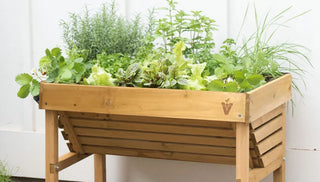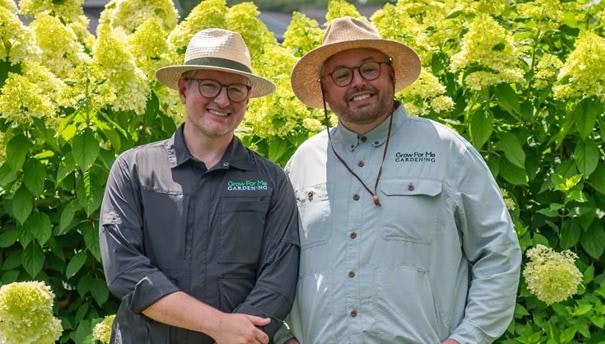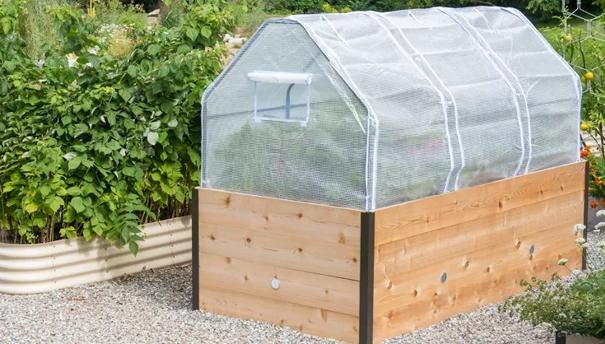People have used herbs for their culinary and healing properties for centuries. Today, herbs remain as popular as ever. Cooks love the unique flavors that herbs lend to all kinds of food and drink. Herbalists treasure the healing qualities of certain flowers, leaves and roots. Herbal crafters preserve the beauty and fragrance of flowers and leaves in potpourri, wreaths, sachets and dried arrangements. And gardeners value herbs for all their excellent qualities, including their vigor, low maintenance and natural resistance to pests.
When most of us think of herbs, we picture the common kitchen seasonings, such as basil, rosemary, sage and thyme. Yet, an herb is any plant that is considered useful. For instance, the leaves, roots, seeds, stems or flowers of an herb might be important as a source of flavoring, medicine, fragrance, dye or some other product. It's not all about function. Some gardeners grow herbs simply because they are beautiful.
 The Gardener's Best® Strawberry and Herb Grow Bag has sturdy nylon handles so it's easy to move to the sunniest spot, or to a protected area on chilly nights.
The Gardener's Best® Strawberry and Herb Grow Bag has sturdy nylon handles so it's easy to move to the sunniest spot, or to a protected area on chilly nights.Where to Plant
Most herbs thrive in typical garden soil, as long as it has good drainage. However, some herbs, such as rosemary, lavender and bay, are woody plants native to the Mediterranean. These herbs prefer gritty, sharply drained soil. Good drainage is crucial because the roots of Mediterranean natives are likely to rot in moist soil. If your garden soil is heavy, grow these herbs in raised beds or planters.
Most herbs thrive in full sun (six or more hours of direct sunlight per day). If you have a garden that receives less sun, choose herbs that don't need as much.
Good choices include:
- mint
- chives
- parsley
- cilantro
- shiso
- tarragon
Like other plants, herbs can become stressed in windy or exposed sites. Growing herbs in beds near the house or next to other buildings or walls provides a warm, sheltering microclimate and increases a gardener's chances of success with tender perennials like rosemary, which is hardy only to Zone 8. Even if you grow rosemary in containers and bring it indoors for the winter, it's still a good idea to set it out in a sunny, sheltered area.
Where to Get Plants
Some herbs are easy to start from seed, but others take a long time to germinate. Buy slow-growers at a nursery or divide existing plants. In some cases, you can grow new plants from cuttings.
From Seed:
Before sowing any herb, whether in seed-starting trays or directly in the garden, read the seed packet, which will give you important information. Herbs that are easy to grow from seed include:
- basil
- borage
- calendula
- chervil
- cilantro
- dill
- parsley
- sage
From Division:
Perennial herbs can be divided easily. Use a garden fork to dig up the plant's root system and either pull the roots apart by hand (as with chives), or cut the root mass into several pieces and replant them elsewhere in the garden. You can also put small divisions in pots to grow indoors during the winter. If the divisions are to be used outdoors, the best time to divide is fall, when they are winding down for the year. When divided and replanted in autumn, plants get established faster.
Perennial herbs that respond well to division include:
- bee balm (monarda)
- chives
- garlic chives
- lovage
- marjoram
- oregano
- thyme
From Cuttings:
Stem cuttings of suitable herbs should be taken in spring or summer, when plants are healthy and growing vigorously. Rosemary and tarragon tend to root better in the fall, so use them for cuttings at that time and grow them indoors over the winter. Good choices for cuttings:
- lavender
- mint
- oregano
- sage
- thyme
How to Take Cuttings
- Select stem segments that are tender (usually green and not woody) and about three to six inches long, with at least five leaves along the stem. Make an angled cut, just above an outward-facing leaf node.
- Remove the lower leaves on the stem, dip the cut end in rooting hormone powder, and plant it abuot 2" deep in a 4" pot of moistened potting soil. You can also use vermiculite or perlite.
- Cover the cuttings loosely with a plastic bag to create humid conditions and place them away from direct sunlight.
- Water the plants and water if needed; remove the plastic bag if there seems to be too much moisture. After a few weeks, check for new leaf growth, which indicates that the plants are rooting well. Repot the plants into larger containers filled with regular potting soil and gradually expose the plants to full sun.
Some herbs—such as basil, mint and sage—will form roots in a glass of water.
Growing Herbs in Pots and Planters
By growing herbs in pots and planters, you can grow tender perennials, such as rosemary and flowering sages year-round. Just bring them indoors in the fall. In addition, container gardening is a good option for gardeners who have limited space or soil that doesn't drain well.
Start with good-quality potting soil, which ensures good drainage. Do not use ordinary garden soil, which does not drain well when used in a container. As with other plants in containers, herbs require regular watering and fertilization throughout the growing season. Mediterrainean native, such as rosemary, can tolerate fairly dry soil between waterings. Other herbs with broader leaves need more attention to watering.
During the outdoor growing season, use liquid fertilizer at the rate recommended on the package. If you bring plants inside for the winter, they require much less fertilization; once or twice a month is sufficient.
Herbs That Make Good Houseplants
Herbs that can live for several years in pots include:
- basil
- bay laurel
- chervil
- chives
- mint
- oregano
- parsley
- rosemary
- scented geranium
- thyme




